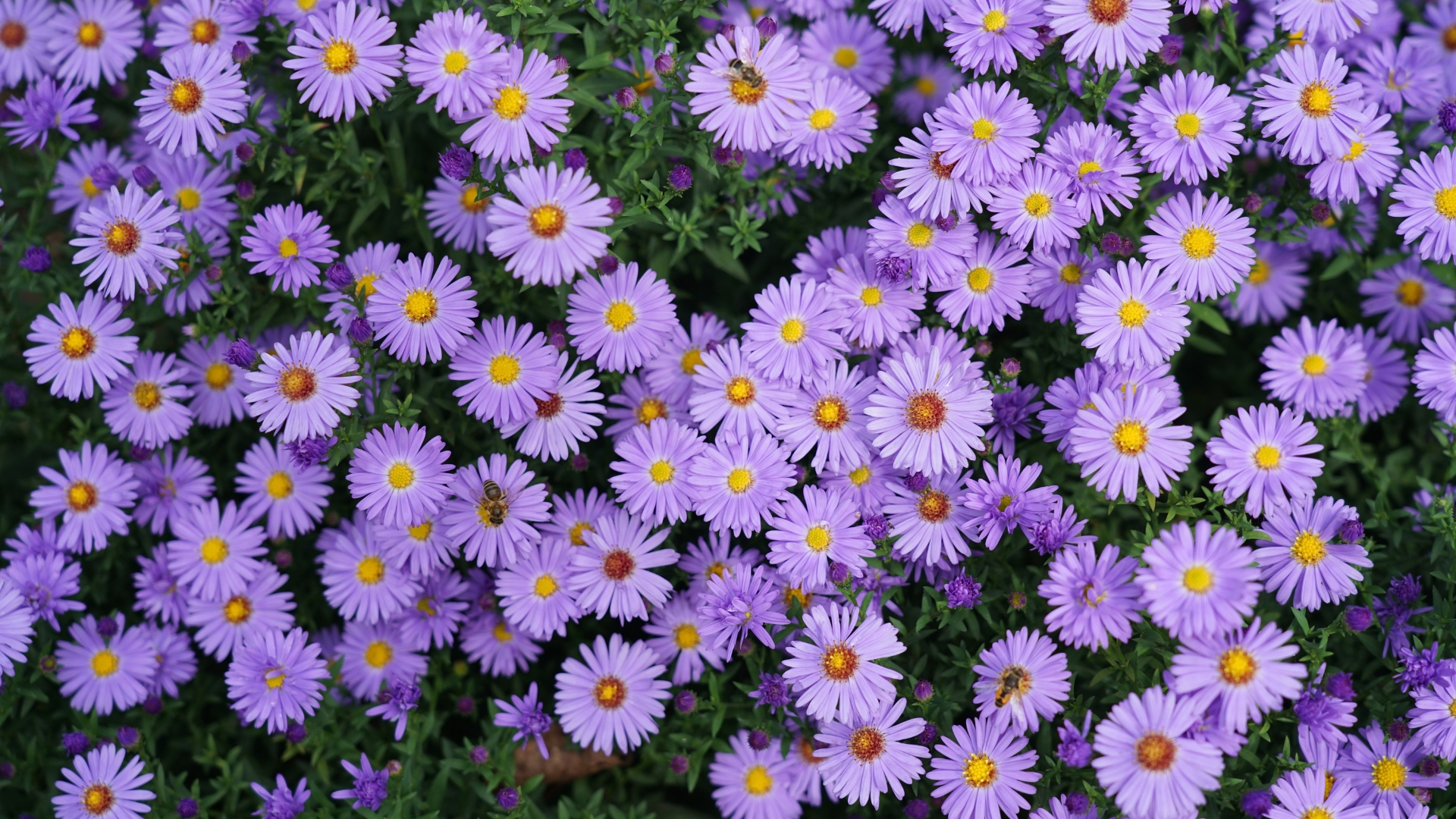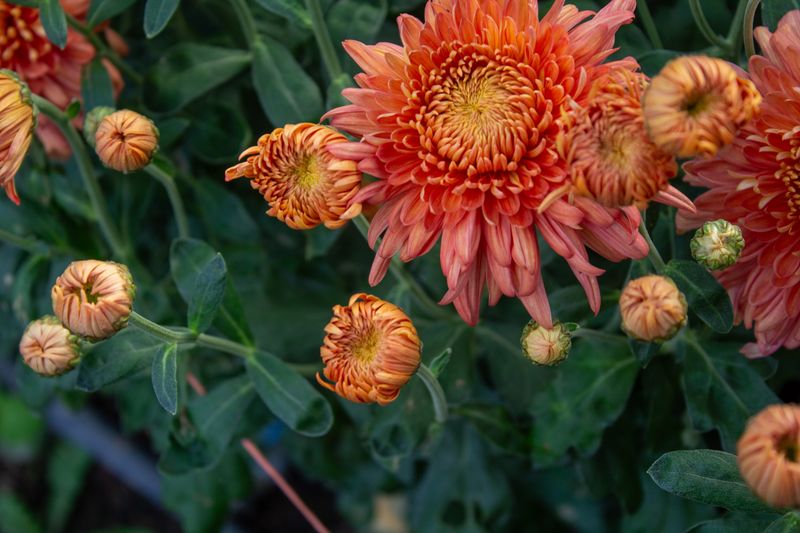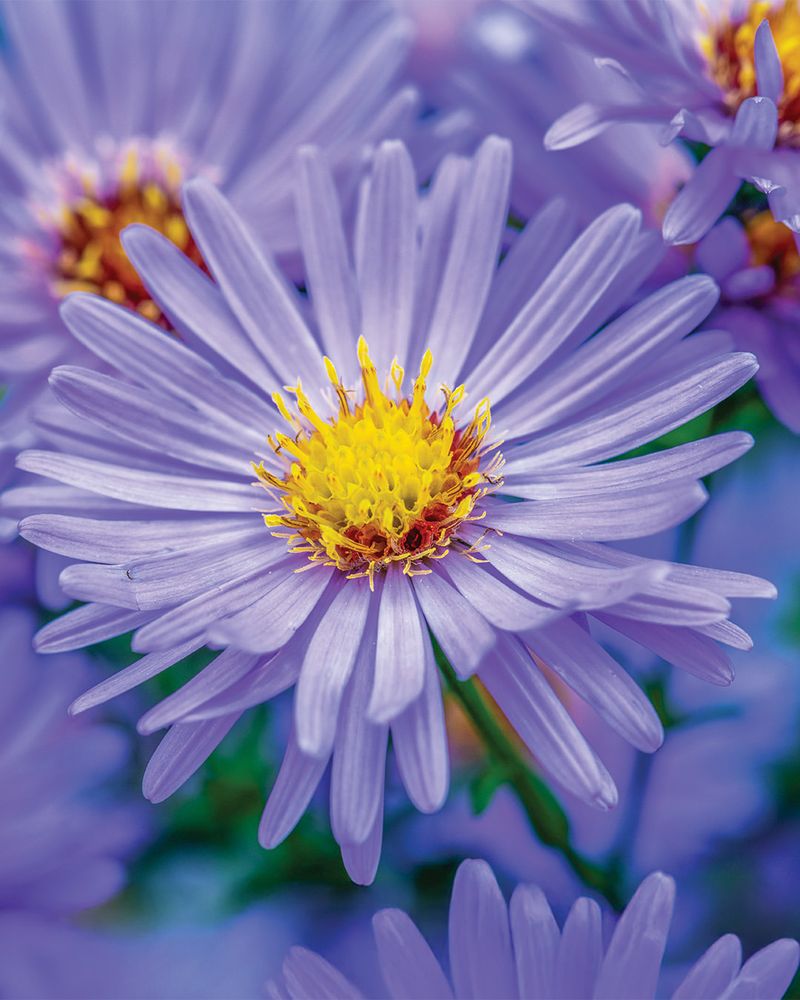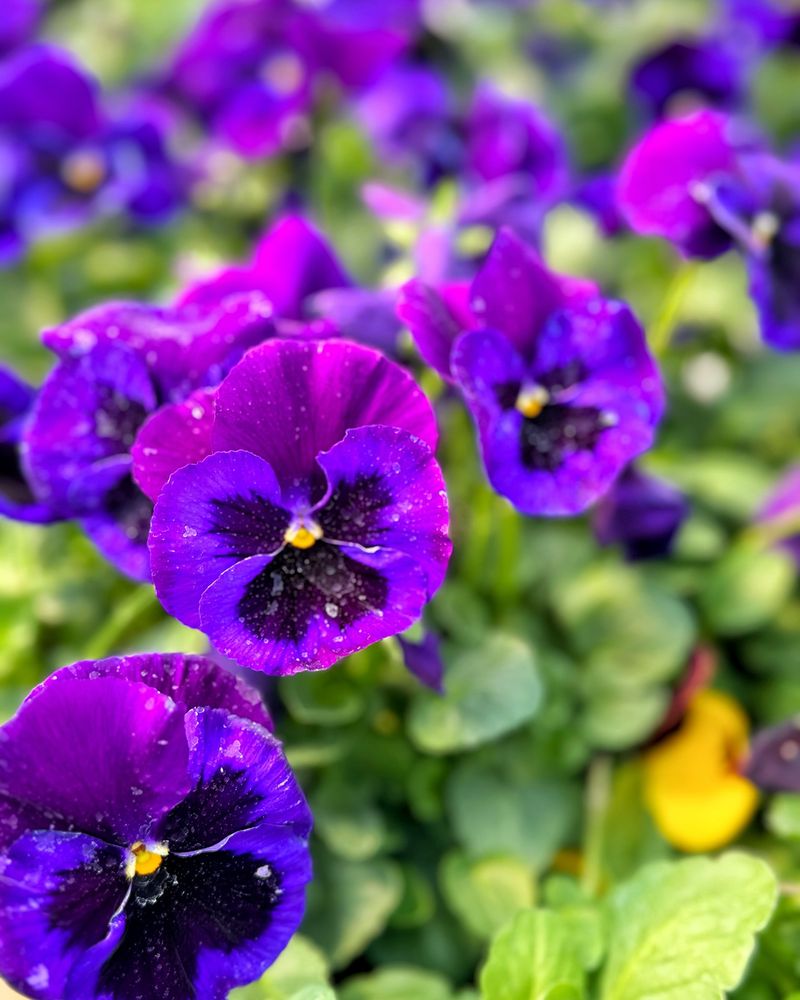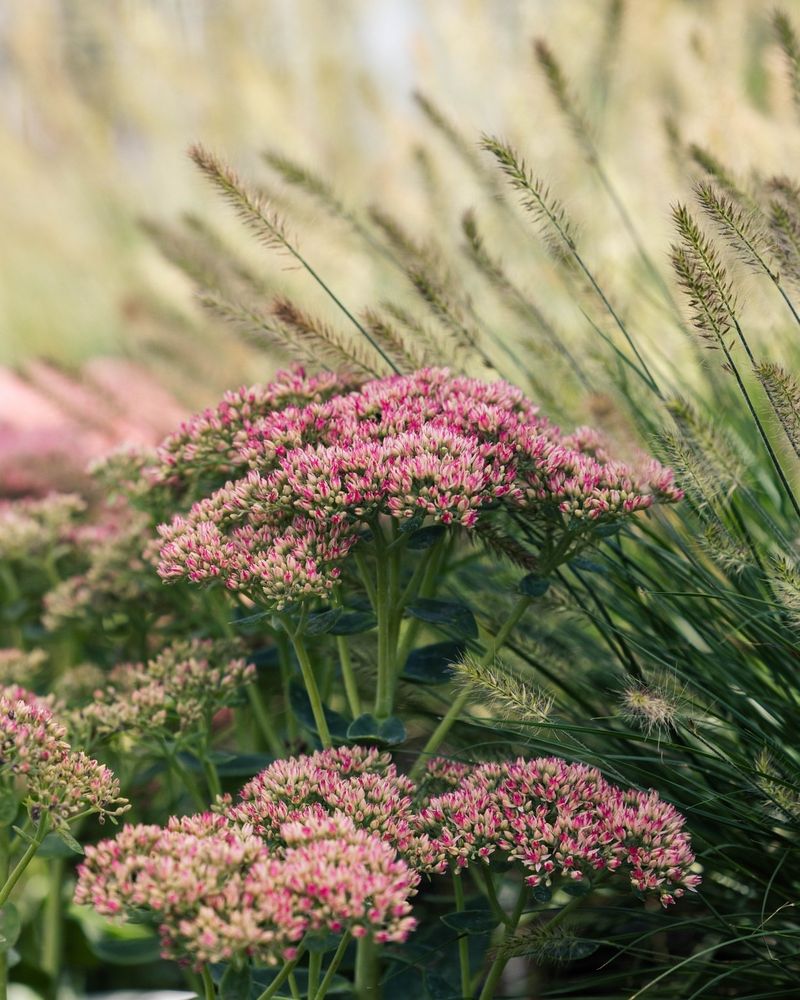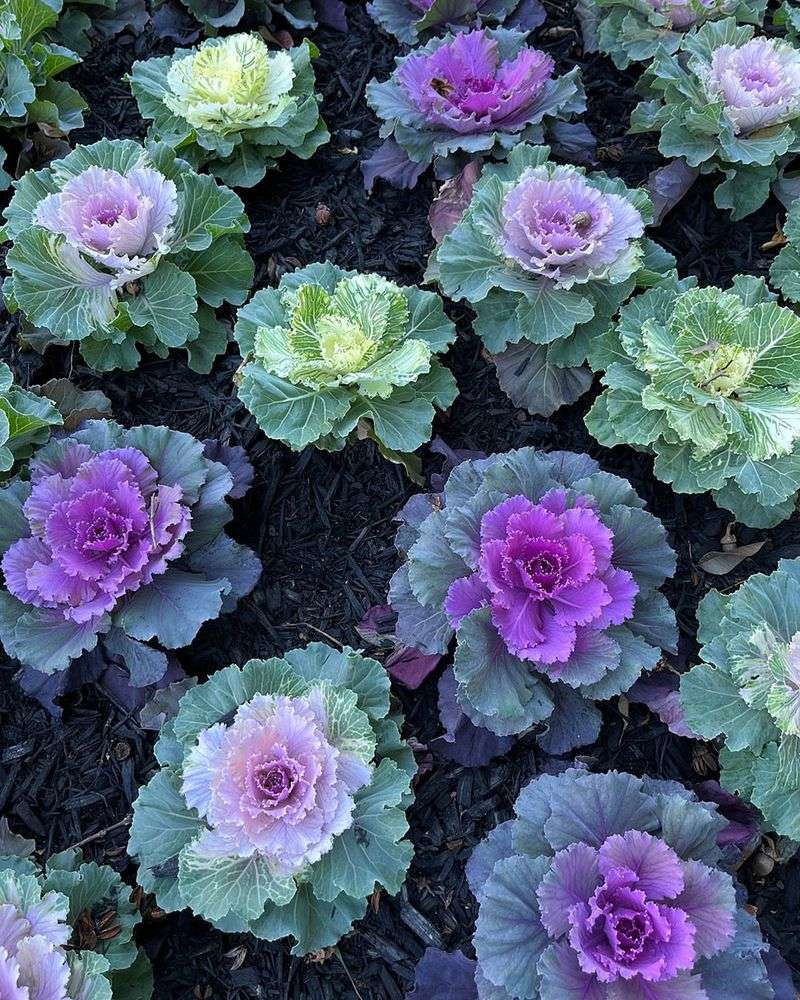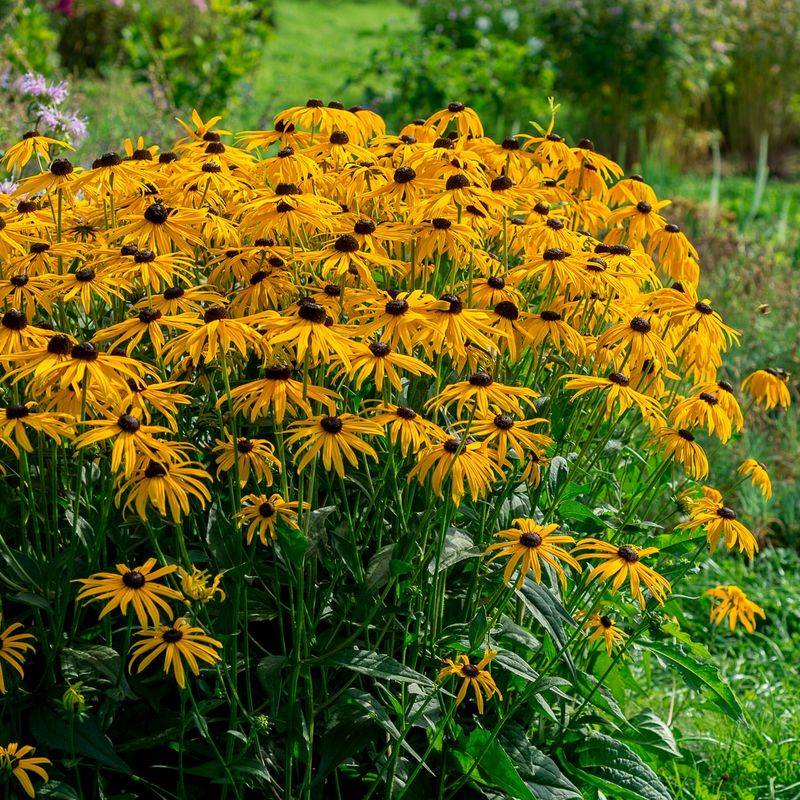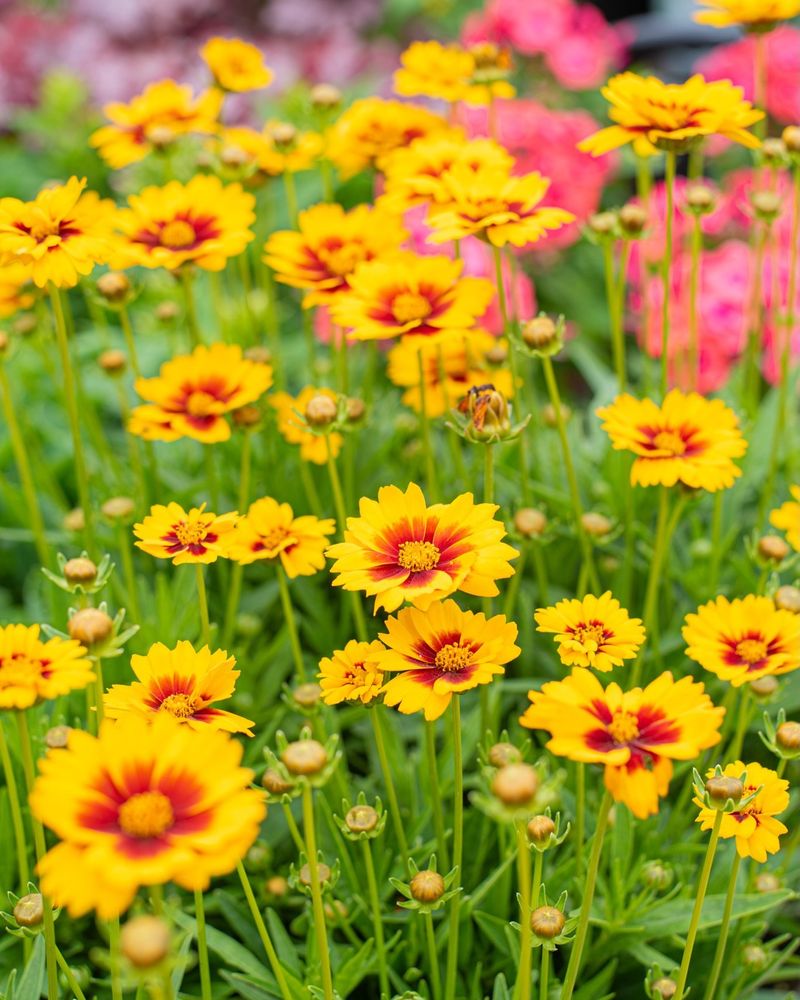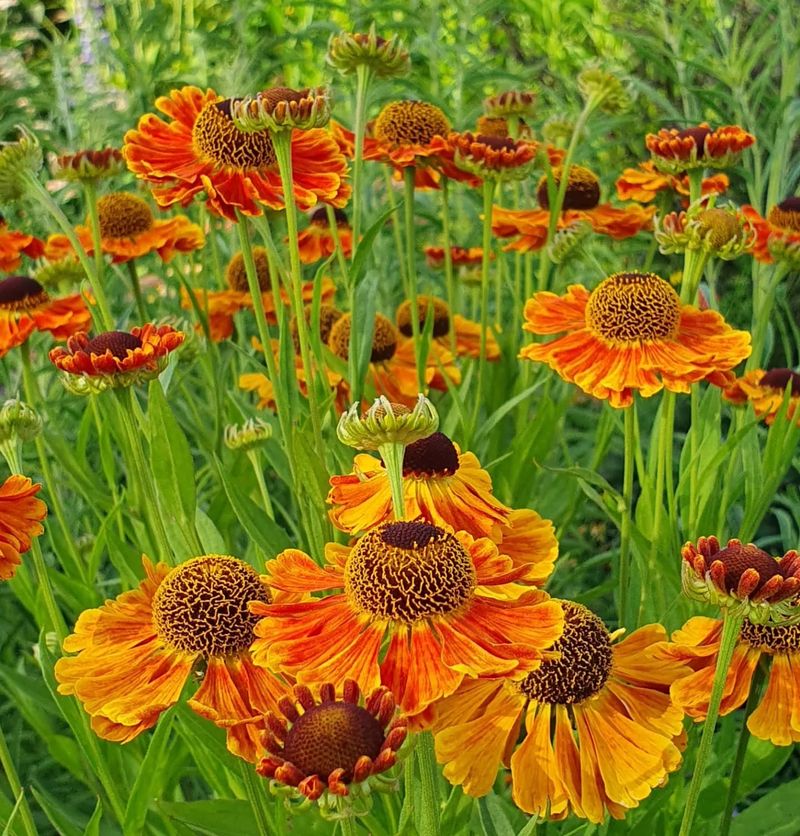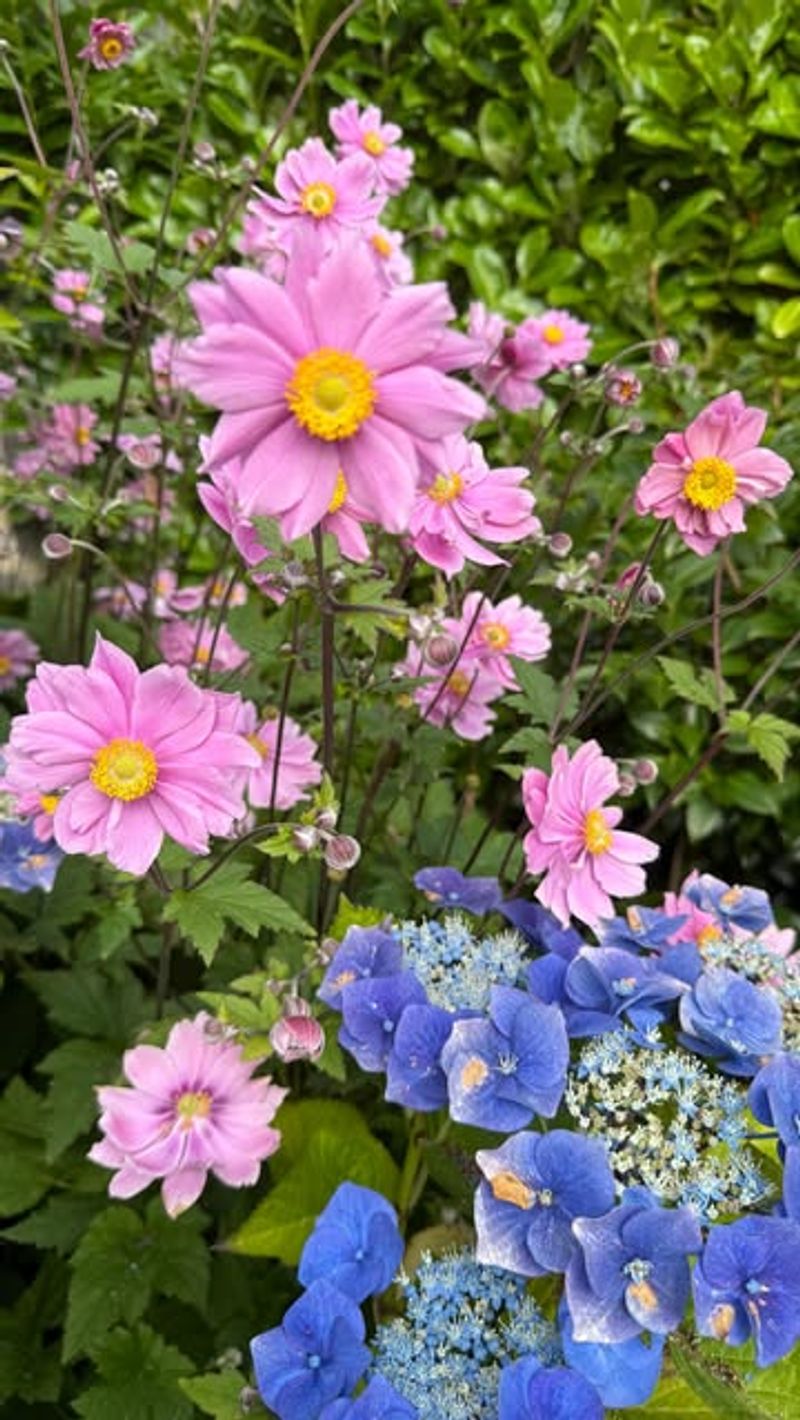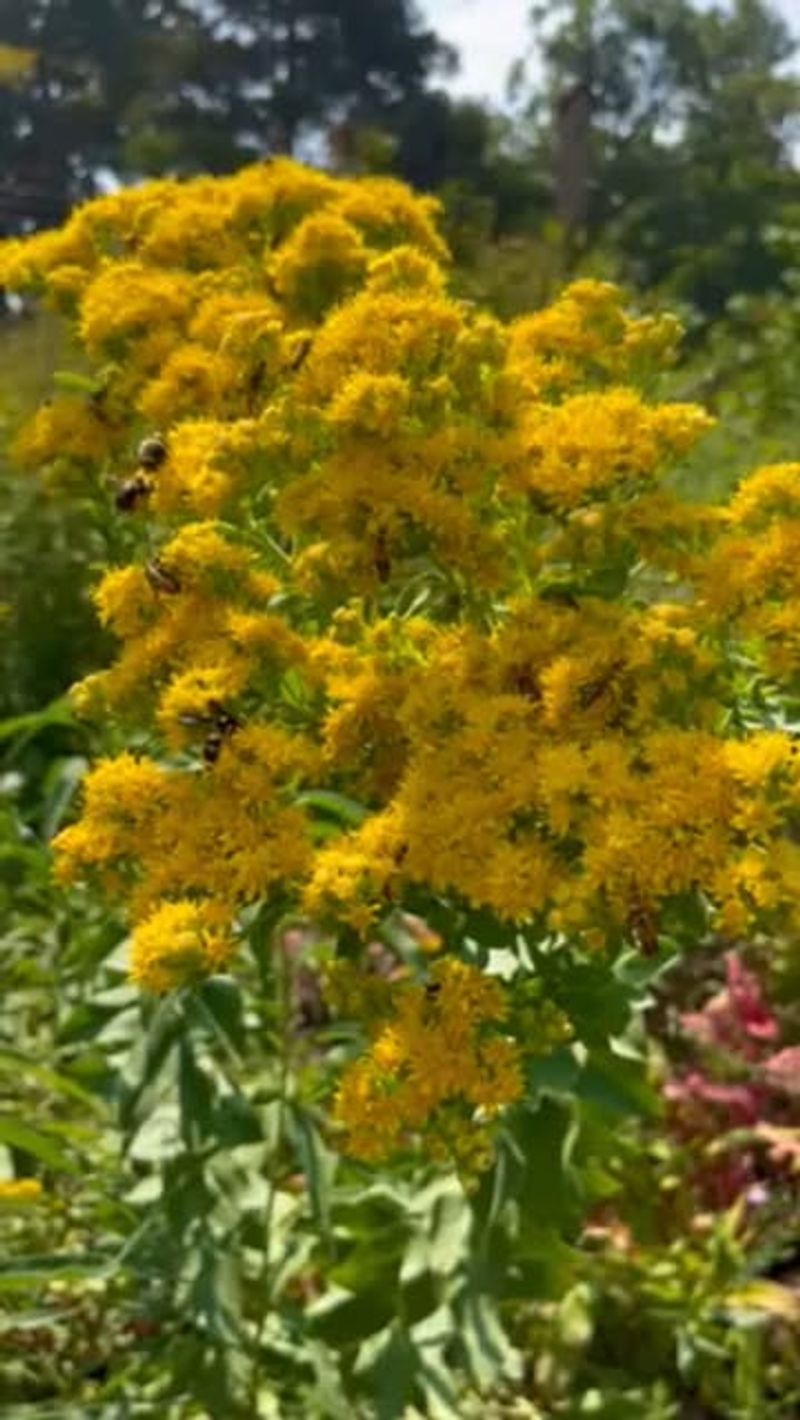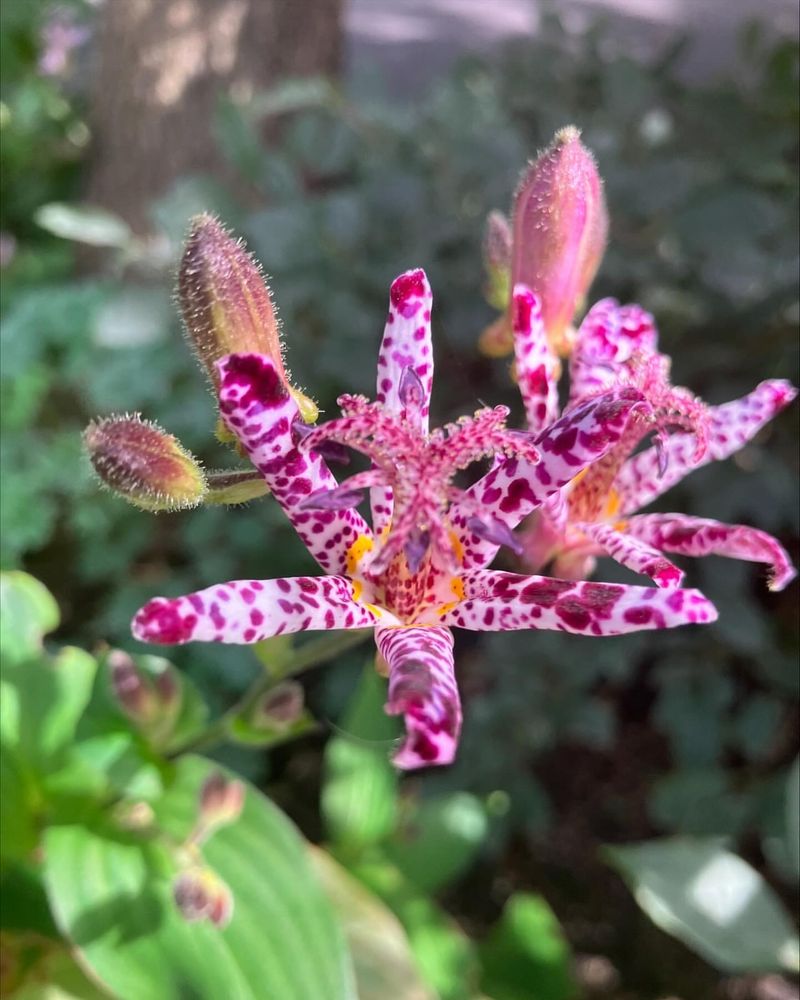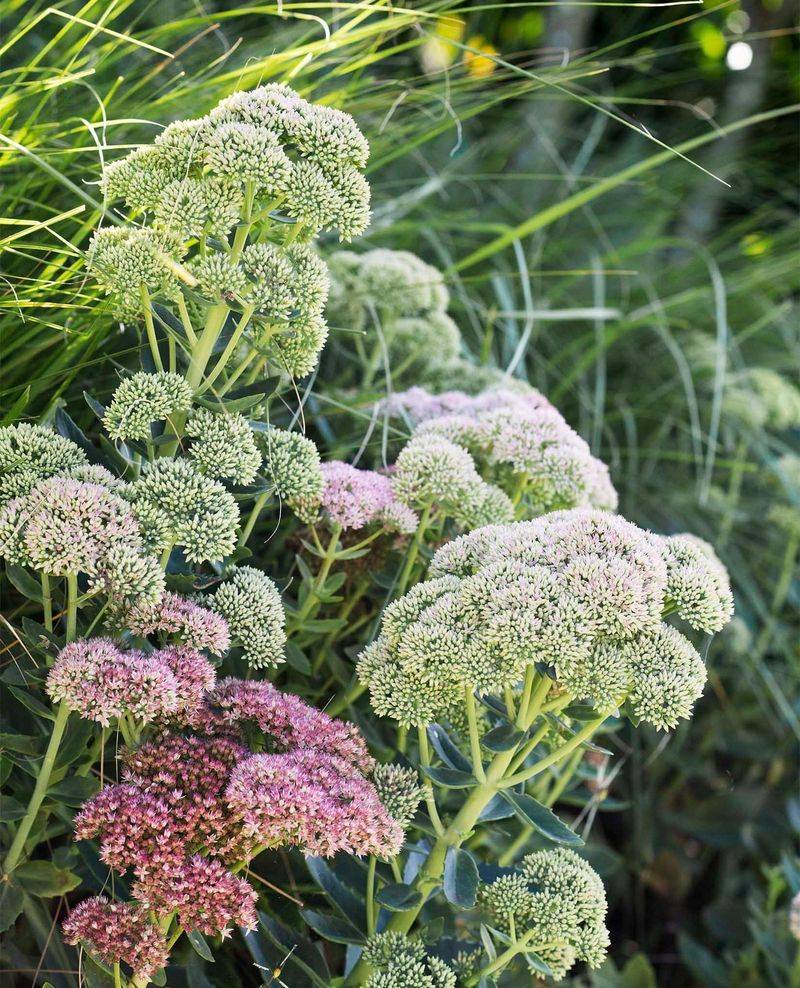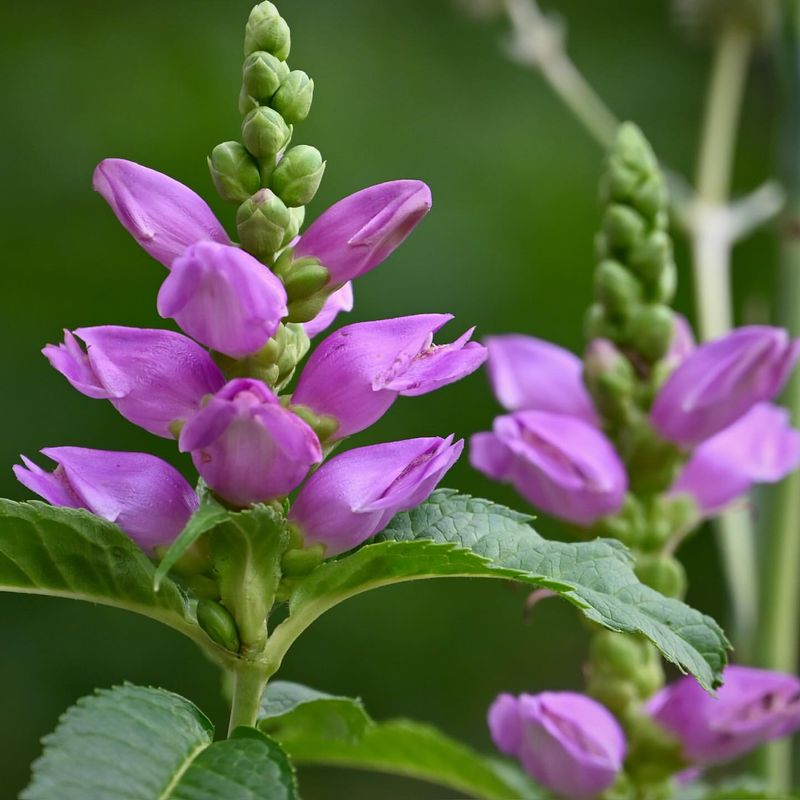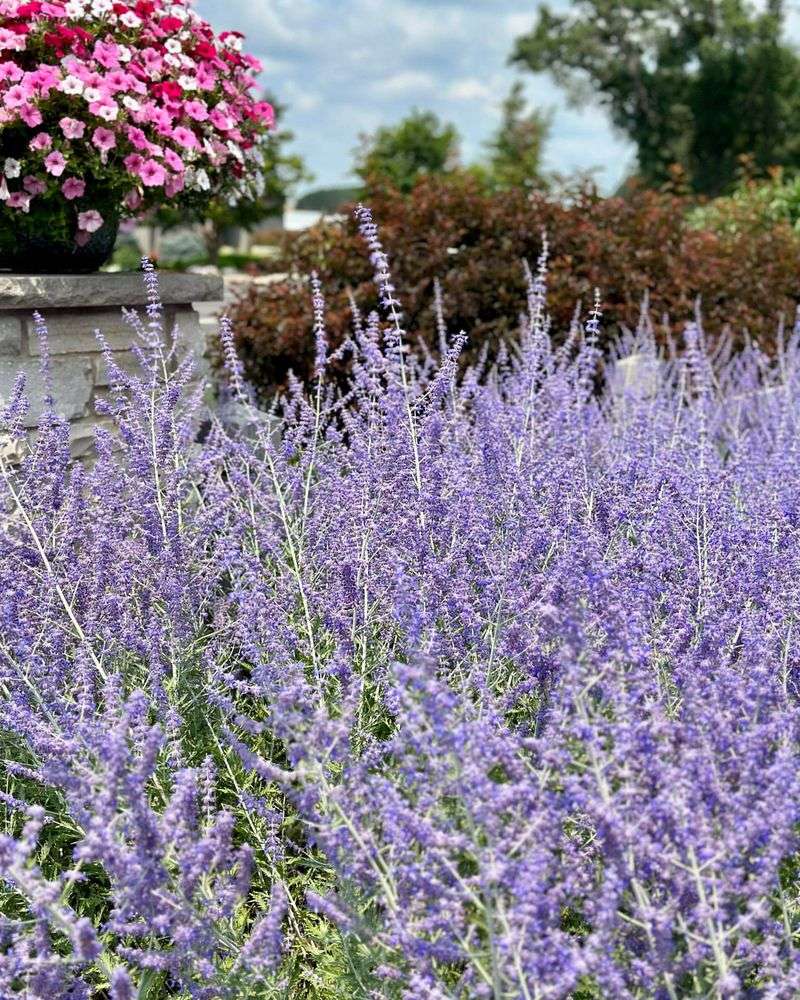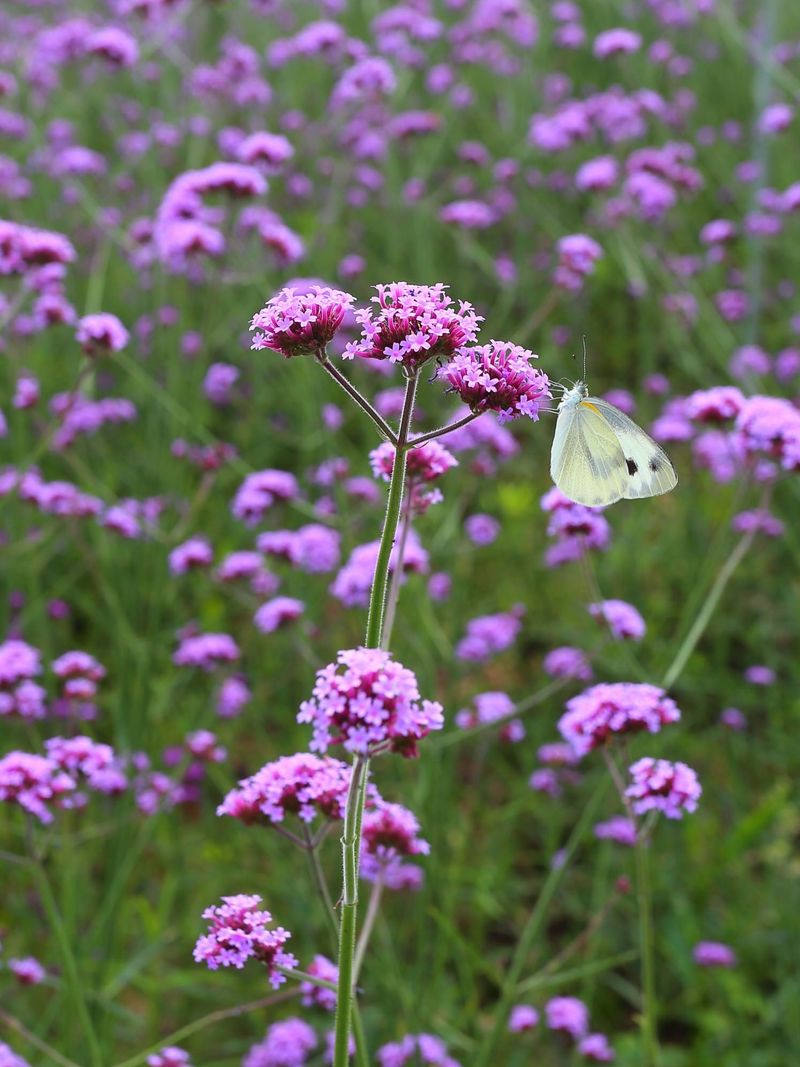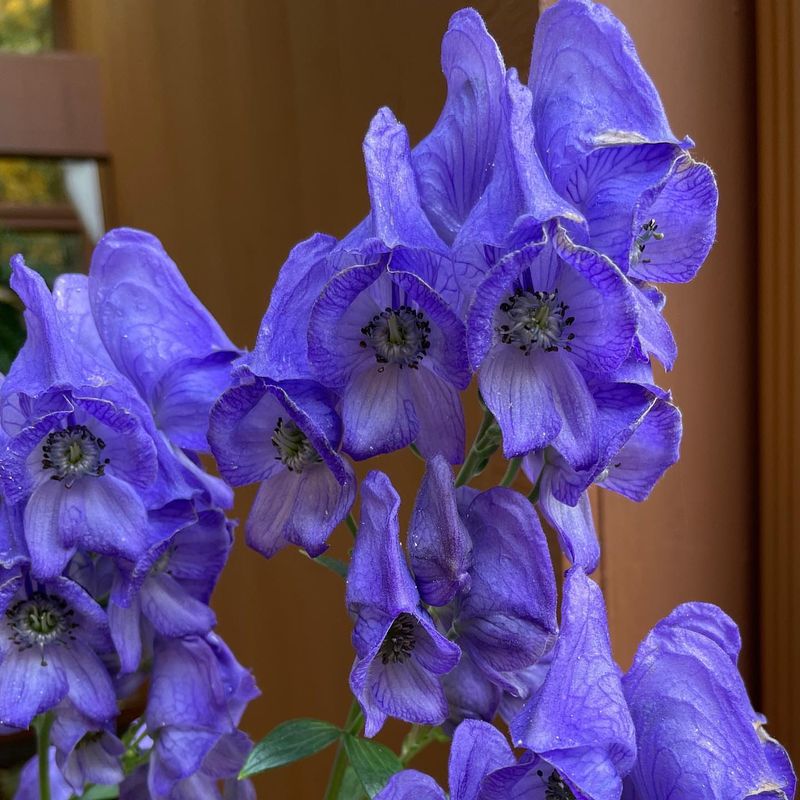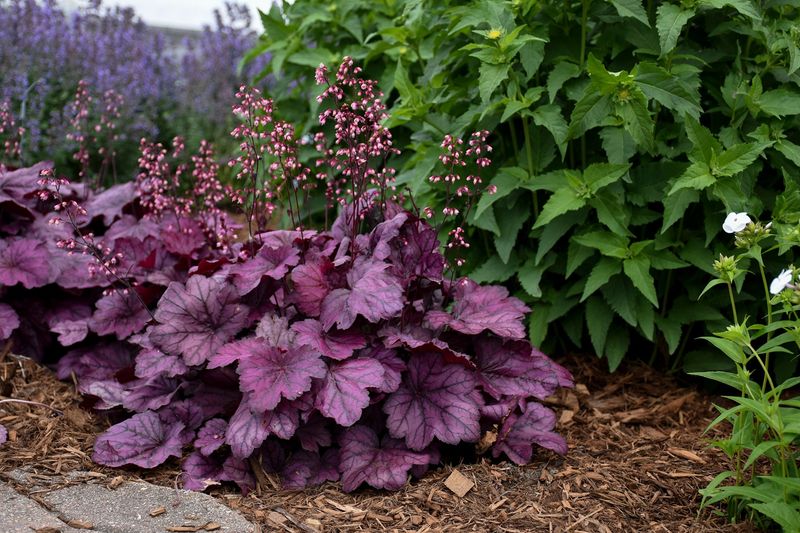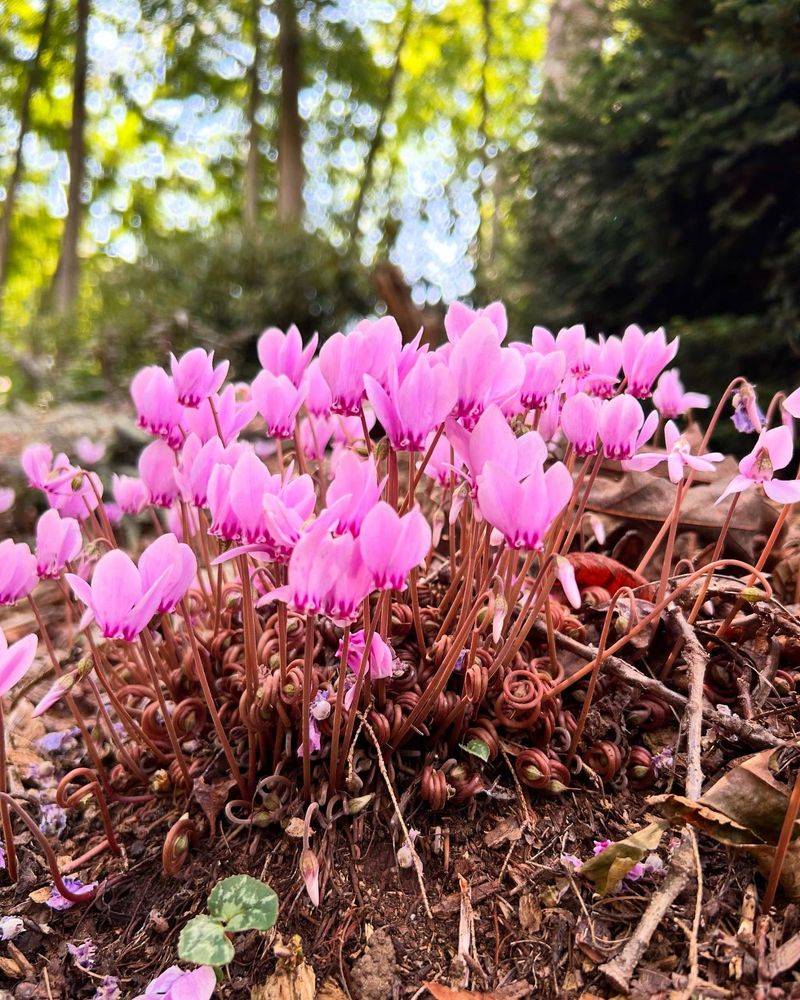August might feel like peak summer, but it’s secretly the sweet spot for planting fall garden favorites. I’ve learned that starting now means stronger roots and better harvests once the weather cools down.
Think juicy greens, crisp radishes, and all those cozy crops that love the shorter days. It’s quick, easy, and gives your garden a fresh second wind.
So don’t pack up your tools just yet—fall’s best is just getting started!
1. Chrysanthemums
Ready to burst with color when other flowers fade, mums are the quintessential fall flower. Their impressive variety of shapes and hues can transform any garden into an autumn wonderland.
Plant them in well-draining soil where they’ll receive plenty of morning sunshine. Water at the base to keep foliage dry and prevent fungal issues.
2. Asters
Star-shaped blooms in purples, pinks and whites attract butterflies and bees when other nectar sources become scarce. These native perennials shine brightest just as summer flowers start to fade.
Give asters full sun and good air circulation to prevent mildew problems. Their daisy-like flowers create a cheerful meadow effect when planted in drifts throughout your garden beds.
3. Pansies
Those cheerful faces can actually survive light frosts and continue blooming through fall into winter in milder climates. Their incredible cold tolerance makes them perfect for adding color during dreary months.
Plant pansies in rich, well-draining soil and they’ll reward you with months of blooms. Many gardeners are surprised to find their fall-planted pansies surviving to bloom again in spring.
4. Sedum
Often called ‘Autumn Joy,’ this succulent perennial develops clusters of tiny star-shaped flowers that transition from pale pink to deep copper. The fleshy leaves store water, making it remarkably drought-tolerant.
Butterflies adore the flat flower heads that provide perfect landing pads. Even after frost, the dried flower heads add winter interest and texture to your garden landscape.
5. Ornamental Kale
Frilly, colorful leaves become more vibrant as temperatures drop, creating stunning rosettes in purples, pinks and creams. Unlike its edible cousins, ornamental kale is grown purely for its dramatic appearance.
Plant in full sun for the most intense coloration. The frost-resistant foliage looks beautiful in containers or borders and provides garden interest well into winter when little else is thriving.
6. Rudbeckia
Better known as black-eyed Susans, these golden daisies with dark centers bring sunshine to autumn gardens. Their native status means they’re naturally adapted to thrive with minimal fuss.
Leave the seed heads in place after blooming finishes to feed hungry birds. Rudbeckias self-seed readily, creating naturalized drifts that return more abundantly each year.
7. Coreopsis
Cheerful daisy-like blooms in sunny yellows and golds keep flowering well into fall if deadheaded regularly. Their fine-textured foliage creates a delicate backdrop for the prolific flowers.
Drought-tolerant once established, coreopsis attracts beneficial pollinators to your garden. The compact varieties make excellent container plants for adding spots of brightness to patios and entryways.
8. Helenium
Often called sneezeweed (though it doesn’t cause sneezing), helenium produces daisy-like blooms in rich autumn hues. The copper, gold and mahogany flowers create a warm color palette perfect for fall gardens.
Butterflies flock to these nectar-rich blooms. Plant in groups of three or five for the most dramatic impact in your perennial borders.
9. Japanese Anemone
Graceful stems rise above basal foliage, topped with delicate pink or white flowers that dance in autumn breezes. Their elegant simplicity provides a refreshing contrast to bolder fall bloomers.
Happy in partial shade, Japanese anemones thrive where other fall flowers might struggle. They spread slowly to form lovely colonies but aren’t aggressive enough to become problematic.
10. Goldenrod
Unfairly blamed for hay fever (ragweed is the real culprit), goldenrod creates spectacular golden plumes in late summer through fall. Native varieties support over 100 butterfly and moth species.
Modern garden cultivars are better behaved than their wild cousins. Plant them at the back of borders where their height creates a beautiful backdrop for shorter fall bloomers.
11. Toad Lily
Exotic-looking orchid-like blooms speckled with purple dots appear on arching stems in shady garden corners. These unusual flowers bloom when most shade plants have finished for the season.
Perfect for woodland gardens, toad lilies appreciate rich, moist soil and protection from hot afternoon sun. Their unique spotted appearance always draws attention and garden visitor questions.
12. Stonecrop
Low-growing succulents form colorful carpets that transition to rich burgundy and copper tones in autumn. Their drought tolerance makes them perfect for rock gardens and poor soils.
Many varieties change color dramatically with cooler temperatures. The fleshy leaves and starry flowers create interesting textural contrast when paired with ornamental grasses in fall container arrangements.
13. Turtlehead
Named for their unique hooded flowers resembling turtle heads, these native perennials produce pink or white blooms in late summer through fall. They naturally grow in moist woodland edges.
Happy in partial shade and consistently damp soil, turtleheads are perfect for rain gardens. Their upright growth habit adds vertical interest to fall garden designs.
14. Russian Sage
Airy spires of tiny lavender-blue flowers create a misty purple cloud effect above silvery foliage. The aromatic leaves release a pleasant scent when brushed against in the garden.
Extremely drought-tolerant once established, Russian sage thrives in hot, sunny locations. The dried flower stems maintain their structure through winter, adding architectural interest to the dormant garden.
15. Verbena
Clusters of tiny flowers in vibrant purples, pinks and reds attract butterflies and hummingbirds well into autumn. Their sprawling habit makes them perfect for spilling over container edges or filling garden gaps.
Heat and drought resistant, verbenas keep blooming when summer flowers have faded. Deadheading spent blooms encourages continuous flowering until frost.
16. Monkshood
Hooded blue-purple flowers resemble medieval monks’ cowls, blooming when few other blue flowers are available in fall. The tall spikes add dramatic vertical elements to autumn gardens.
All parts are highly toxic, so wear gloves when handling. Despite this caution, monkshood is worth growing for its unique late-season color and deer-resistant qualities.
17. Heuchera
Grown primarily for their colorful foliage in shades from lime green to deep purple, heucheras add season-long interest. The ruffled leaves intensify in color as temperatures drop in fall.
Tiny bell-shaped flowers on slender stems attract hummingbirds. Their evergreen or semi-evergreen nature in many climates provides winter interest when other perennials have disappeared.
18. Cyclamen
Hardy varieties produce swept-back butterfly-like flowers in pink, white or red above marbled heart-shaped leaves. Unlike their tender houseplant cousins, garden cyclamens bloom through fall and winter.
Plant under deciduous trees where summer shade gives way to winter light. The nodding flowers look especially magical on frosty mornings when few other plants dare to bloom.

